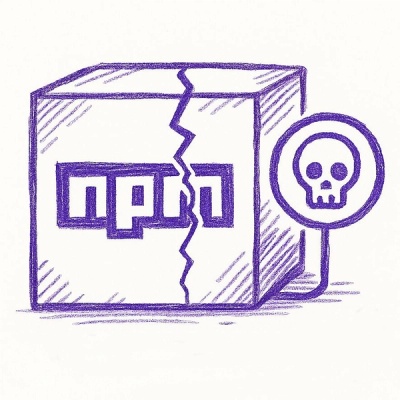
Security News
Bun 1.2.19 Adds Isolated Installs for Better Monorepo Support
Bun 1.2.19 introduces isolated installs for smoother monorepo workflows, along with performance boosts, new tooling, and key compatibility fixes.
require-inject
Advanced tools
A simple mock injector compatible needing no instrumentation in the libraries being tested
A simple mock injector compatible needing no instrumentation in the libraries being tested
var requireInject = require('require-inject');
var mymod = requireInject('mymod', {
'fs': {
stat: function (file,cb) {
switch (file) {
case 'testfile1': return cb(null,{})
case 'testfile2': return cb(new Error('ENOENT'))
}
}
}
})
var myglobal = requireInject.installGlobally('myglobal', { … })
var mymod = requireInject( module, mocks )module is the name of the module you want to require. This is what you'd
pass to require to load the module from your script. This means that for
relative paths, the path should be relative to your test script, not to the
thing you're injecting dependencies into.
mocks is an object with keys that are the names of the modules you want to mock and values of the mock version of the objects.
requireInject makes it so that when module is required, any of its calls to require for modules inclued in mocks will return the mocked version. It takes care to not impact any other uses of module, any calls to require for it will get a version without mocks.
var mymod = requireInject.withEmptyCache(module, mocks)As with requireInject but your require cache will be cleared before requring
the module to have mocks injected into it. This can be useful when your test shares
dependencies with the module to be mocked and you need to mock a transitive
dependency of one of those dependencies. That is:
Test → A → B
ModuleToTest → A → MockedB
If we we didn't clear the cache then ModuleToTest would get the already
cached version of A and the MockedB would never be injected. By clearing the cache
first it means that ModuleToTest will get it's own copy of A which will then pick
up any mocks we defined.
Previously to achieve this you would need to have provided a mock for A,
which, if that isn't what you were testing, could be frustrating busy work.
var myglobal = requireInject.installGlobally( module, mocks)As with requireInject, except that the module and its mocks are left in
the require cache and any future requires will end up using them too. This
is helpful particularly in the case of things that defer loading (that is,
do async loading).
var myglobal = requireInject.installGlobally.andClearCache(module, mocks)As with requireInject.installGlobally but clear the cache first as with
requireInject.withEmptyCache. Because this globally clears the cache it
means that any requires after this point will get fresh copies of their
required modules, even if you required them previously.
FAQs
A simple mock injector compatible needing no instrumentation in the libraries being tested
The npm package require-inject receives a total of 22,523 weekly downloads. As such, require-inject popularity was classified as popular.
We found that require-inject demonstrated a not healthy version release cadence and project activity because the last version was released a year ago. It has 1 open source maintainer collaborating on the project.
Did you know?

Socket for GitHub automatically highlights issues in each pull request and monitors the health of all your open source dependencies. Discover the contents of your packages and block harmful activity before you install or update your dependencies.

Security News
Bun 1.2.19 introduces isolated installs for smoother monorepo workflows, along with performance boosts, new tooling, and key compatibility fixes.

Security News
Popular npm packages like eslint-config-prettier were compromised after a phishing attack stole a maintainer’s token, spreading malicious updates.

Security News
/Research
A phishing attack targeted developers using a typosquatted npm domain (npnjs.com) to steal credentials via fake login pages - watch out for similar scams.